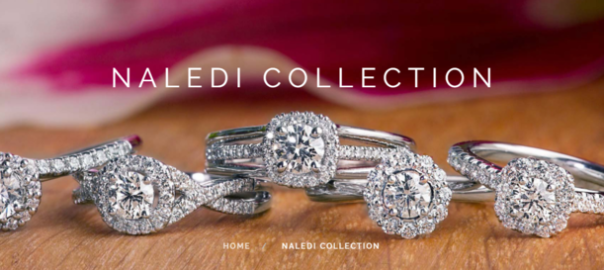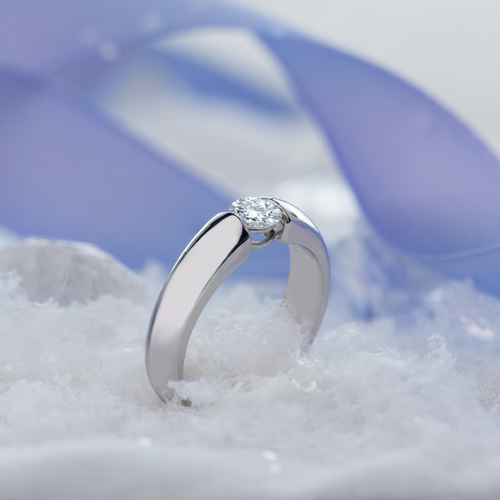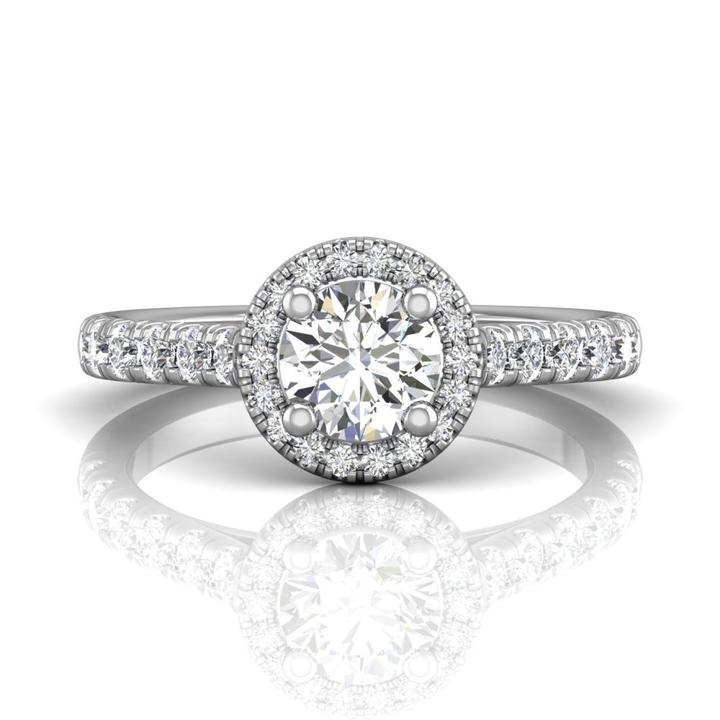Engagement Ring Settings

Engagement ring settings refers to how the diamond (or center stone) is attached to the ring and sure-enough, there are many ways to do so. At Schwanke-Kasten Jewelers, we carry an wide array of engagement rings with various settings.
ENGAGEMENT RING SETTINGS
PRONG SETTING:
The most common settings you’ll find in the market are four and six prong settings on solitaire diamonds. Jewelers prefer this setting because it elevates the diamond, showcasing the stones fire and brilliance while offering a clean, timeless look that is easy to maintain. The pieces of metal that hold the center stone in place (the prongs) often have a rounded, points, flat or v-shape. These metal prongs extend up and gently fold over the diamond to secure it in place. Whats the benefits over one or the other? Simply put, a four prong setting will show off more of the diamond while six prongs will make the diamond more secure. Additionally, six prong settings make the diamond appear more round (versus square with a four prong). Prong settings in general use less metal than other settings, so either way they will be more visible.

However, because the diamond is elevated, should you have an active lifestyle or wear lots of loose fitting clothing, you will run a heightened risk of the setting getting snagged on clothing. So we recommend having annual “check-ups” with this type of setting.
TIFFANY SETTING
A special six prong setting scientifically developed by the famed light blue box jeweler Tiffany & Co., in 1886. This setting maximizes the light returned on the diamond by using a knife edge of its shaft and design of its prongs. The benefits and cons are similar to your standard prong setting.
CATHEDRAL SETTING
Jewelers consider the cathedral setting as one of the more elegant and classic engagement ring settings. While the center stone may be set using prongs, tensions or bezel settings, what defines this setting is really the arches mounted above the rest of the shank. These arches add additional height making the stone appear larger and more accentuated. That height, however, comes at the added risk of being snagged on clothing, furniture and other objects.
BEZEL SETTING
Due to its modern look and suitability for active lifestyles, the bezel setting is quickly becoming a popular style. Instead of elevating the diamond with prongs, jewelers use a metal rim custom-fitted to encircle, either fully or partially, the center stone in place. The absence of prongs will no longer snag on clothing as well as protects the diamond very well. However, with extra protection comes more center stone being hidden and less light being allowed in.

CHANNEL SETTING
Often times jewelers set smaller diamonds on the shank or band of the ring to enhance the ring’s overall sparkle while minimizing snagging opportunities and maximizing stone security. Using grooves in a metal channel (or row), the stones are set, flush against each other. The downside, is that it is difficult to clean within the grooves as well as resize.
PAVE SETTING
While very similar to the channel setting, jewelers will drill holes into the ring, place the stones into the ring then form tiny beads (prongs) around each stone to secure them. Pave settings provide additional brilliance and sparkle to highlight the center stone, more so than channel setting, but is much more difficult to resize that a channel set ring.

If diamonds are smaller than .01 carat, it is called micro-pave, which you see often with our Martin Flyer collection.
HALO SETTINGS
At Schwanke-Kasten Jewelers, we carry many engagement rings using halo settings as they provide a beautiful way to make a smaller carat center stone bigger or a lesser quality center stone more vibrant. This setting refers to smaller stones encircling the center stone, like a…wait for it, halo (or doughnut). The downside of halo settings is that it may become hard to resize but it adds additional security to the center stone as well as can provide contrast if you decide to use different gemstones or metals.
SPLIT SHANK
For a more modern look (or classic, depends on how you go), the split shank is a beautiful way to go. The shank, or the part that encircles your finger, splits into two (or more) to hold the center stone. This type of setting provides a unique, attention grabbing appearance that offers additional area for side stones as well as gravitates the eye towards the center stone.
There are many other types of engagement ring settings such as: cluster, flushed, bar, antique, tension, bezel, three stone and more. At Schwanke-Kasten Jewelers, we have an in-house goldsmith that will let you craft the perfect, custom engagement ring. Otherwise, you can find an outstanding, engagement ring from one of our highly-trustworthy designers such as: Rahaminov, Martin Flyer, Memoire and Naledi.